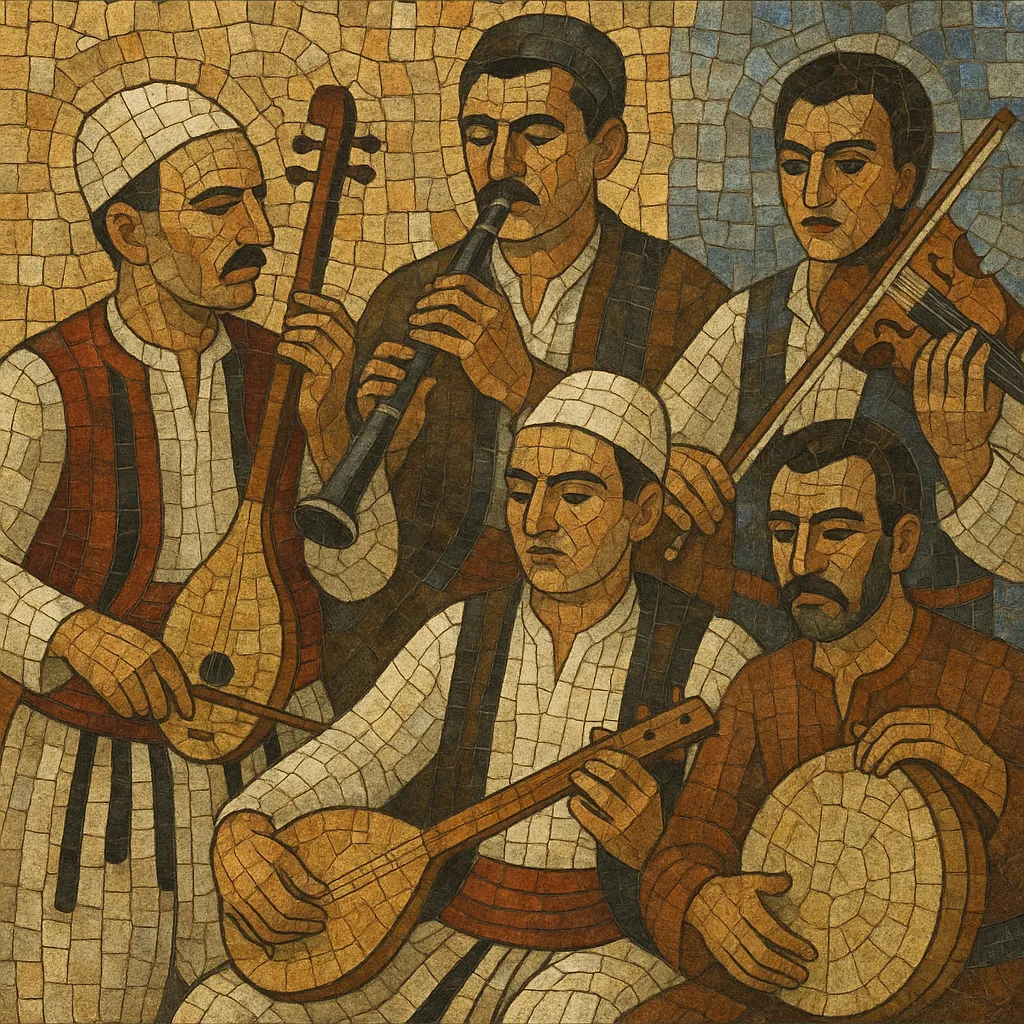Albanian folk music encompasses a rich tapestry of northern Gheg epic song traditions and southern Tosk iso‑polyphony, shaped by centuries of life in the Balkans and the eastern Mediterranean.
The northern repertories center on narrative ballads and heroic epics accompanied by the single‑string lahuta and the two‑string çifteli, alongside flutes (fyell) and frame drums. In the south, small saze ensembles (clarinet, violin, llautë/lute, accordion, and frame drum) support highly ornamented melodies and the celebrated iso‑polyphonic singing whose sustained drone (iso) underpins interlocking solo and choral parts.
Melodically, Albanian folk often uses modal scales with augmented seconds and melisma reminiscent of maqam and Byzantine chant, while rhythmically it spans simple duple dances to asymmetric aksak meters (5/8, 7/8, 9/8, 11/8). Lyrics portray love, landscape, exile, and honor (besa), with regional colors that remain distinct yet complementary across the country and the Albanian‑speaking world.
Albanian folk music crystallized from ancient Balkan strata, pastoral song, and ritual practice. Over medieval centuries, proximity to Byzantine sacred traditions and later Ottoman cultural spheres layered modal practices and melismatic singing onto local repertoires, while epic storytelling and dance remained central in village life.
In the north (Gheg regions), music emphasized narrative and epic song—often solo—accompanied by the lahuta (one‑string spike fiddle) or the çifteli. These songs celebrate clan history, heroism, and social codes such as besa, while lively dances employ brisk duple meters.
In the south (Tosk regions), ensemble practice developed through saze groups combining clarinet, violin, llautë, accordion, and percussion. Distinctive iso‑polyphonic singing—recognized by UNESCO—features a sustained drone (iso) supporting a solo leader and responsive voices that weave close, ornamented lines.
During the 20th century, urban centers like Shkodër, Korçë, Gjirokastër, and Përmet fostered local song schools and saze lineages. Radio, recording, and national festivals (notably the National Folklore Festival of Gjirokastër) consolidated regional styles into emblematic national sounds while preserving micro‑regional repertoires.
After the 1990s, diaspora communities and world‑music circuits brought Albanian saze and iso‑polyphony to international audiences. Reissue labels, research, and new ensembles (often mixing clarinet, violin, and lute with accordion) sustained revivalism, while wedding bands and pop‑folk adaptations connected tradition to contemporary dance floors.
Albanian folk’s dual identity—epic northern song and southern polyphony—remains a hallmark of Balkan musical diversity. Its modal color, asymmetric meters, drones, and ornamental singing continue to influence regional pop‑folk, world‑music collaborations, and heritage performance at home and abroad.


